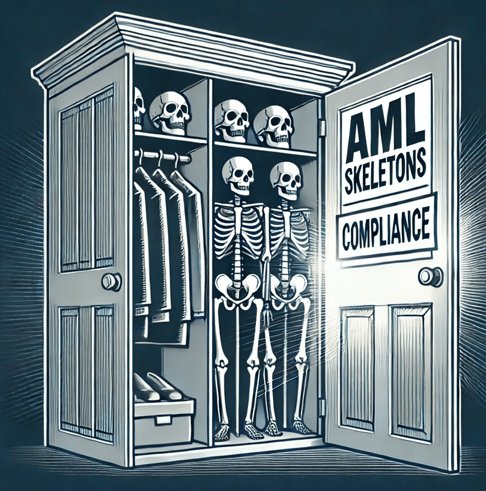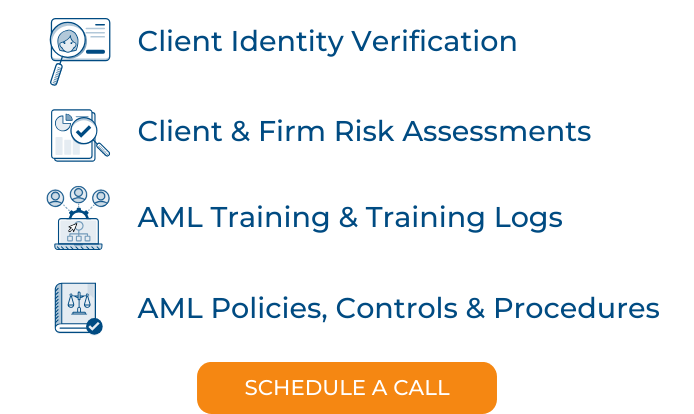
When speaking with practice owners, there is a clear theme that Accountants and Bookkeepers are struggling to balance client workload and compliance obligations. A perfect storm of rising costs, increasing regulatory requirements and resource shortages is resulting in a difficult situation with a less-than-ideal outcome.
The reality is that payroll, VAT, income tax, bookkeeping, accounts preparation and other time-critical client tasks often take priority. Practices fall behind on AML compliance tasks such as refreshing Client IDs, Client Risk Reviews and Ongoing Monitoring obligations.
It can feel like an overwhelming task to get back on track; however, there is a conscious awareness that the business is not fully compliant and fearful pangs of an impending AML inspection doesn’t help matters.
In this article, we help you identity a route back to compliance. In three steps we will help you identify compliance gaps, consider the different approaches to get back on track and help you focus on your next actions.
Step 1: Identify Compliance Gaps
If you are not sure of your AML Obligations then check out our handy 60-second checklist to help identify compliance gaps: Compliance Checklist
When conducting an AML review, a compliance backlog will often be identified within the AML client files and the practice will need to find an efficient way to:
- Check each Client file to see what is up to date and what needs to be refreshed
- Communicate with Clients to collect missing or out of date ID and proof of address documents and potentially conduct further PEP/Sanction screening
- Go to the Register of Beneficial Ownership (RBO) to check if the register reflects the practices knowledge of each Client (applies to corporate clients only)
- Conduct or refresh the Client Risk Assessment and potentially seek more information from the Clients
Step 2: How to clear a Compliance backlog
There are a number of different approaches that you can take to address compliance gaps, however, you may be constrained by the overarching driver that initiated the AML review.
If you receive a letter from your professional body, then you will no doubt have laser focus. You will be in reactive mode and there are limitations on what you can achieve in a finite time period. You will want to demonstrate that you understand your obligations; evidence the areas where you are compliant and if questioned, be able to demonstrate that you have addressed any compliance gaps and are on a road to full compliance.
If you are undertaking the review because you know you haven't stayed on top of your AML obligations or are fearful of a potential AML inspection then you will have more time and can take a more gradual approach. Let us now consider three different, and potentially complementary, approaches to address compliance backlogs.
Adoption and Staggered Refresh
Under this approach a practice adopts new AML processes which are then applied to all new clients. The team will also systematically work through their existing client files to address any compliance issues. It is usually a staggered process with continuous and gradual improvements. Client files can be prioritised based on risk level or when the practice is dealing with a matter for the client. Practices will usually prioritise higher risk or audit clients and propagate through all other client files.
This is the most common approach that we see, and it can also be supplemented with Seasonal Bursts.
Seasonal Bursts
Throughout the calendar year there are a number of seasonal opportunities to intensify remedial compliance actions. The summer or festive holiday seasons can often provide a week or two of (relatively) quiet periods where resource can be redirected to pick up compliance tasks.
In addition, external seasonal resources may become available that can be recruited and dedicated to AML administrative tasks. It is worth pointing out that some AML tasks are administrative in nature and can be delegated while other tasks such as completing customer due diligence and client risk assessment will require real client knowledge which would be beyond seasonal or temporary resource.
There are also a number of peak filing periods that yield touch point opportunities with your clients. During these periods clients tend to be more engaged and incentivised to comply with your requests to provide new ID or proof of address documents. Although tax season is a very busy period, it also provides a mass opportunity to refresh client files.
Big Bang
Although not as common as the staggered refresh, we have supported a number of practices with a big bang approach where an individual or team are assigned the task of getting all AML client files up to speed in a relatively short period of time.
In larger firms, we have observed a team divide and conquer the client files with the completion of Client Risk Assessments and Customer Due Diligence reviews. Support from administrative team members is often provided to issue requests to clients for new ID and proof of address documents.
The above approaches are not mutually exclusive and in many cases are used in a complimentary fashion. No two practices are the same and the team will need to carefully consider the approach that will work best for their business based on resource availability, client engagement and the extent of the compliance gaps that need to be addressed.
Step 3: Next Actions
Regardless of your practice size or complexity, your first step should be to make sure you understand your obligations and then put in place (or refresh) your AML Policies, Controls and Procedures (PCP). Your PCPs are the bedrock on which your practice operates and should detail how your go about your daily tasks from an AML perspective.
Your PCP manual needs to be tailored to your business and should be produced in accordance with a Firm-wide Business Risk Assessment to understand the risk profile of your business and the clients and services provided.
You also need to train your team and make sure that all relevant team members understand their obligations, understand your policies, controls and procedures and are aware of what red-flags to look out for.
You can complete the above next actions very quickly and in doing so you position yourself to be compliant for any new clients. In parallel you can adopt the best strategy to clear the compliance backlog across your existing client base. This is the best approach to putting your best foot forward and being able to demonstrate that you understand your obligations; are well organised and are addressing any compliance gaps across your AML client files.
How can AML HQ help?
At AML HQ, we pride ourselves on offering brilliant but simple AML compliance software that gets you inspection-ready. Our all-in-one solution is tailored to meet the needs of sole practitioners and SME practices, encompassing AML client files, risk assessments, PCP templates, staff training, and identity verification tools.
For a streamlined approach to AML compliance, look no further than AML HQ. Schedule a call with our team today to discover how our secure portal can address all your AML obligations, allowing you to achieve compliance in less than an hour. Together, let's simplify AML compliance and focus on the exceptional aspects of your practice.
Compliance Made Easy
